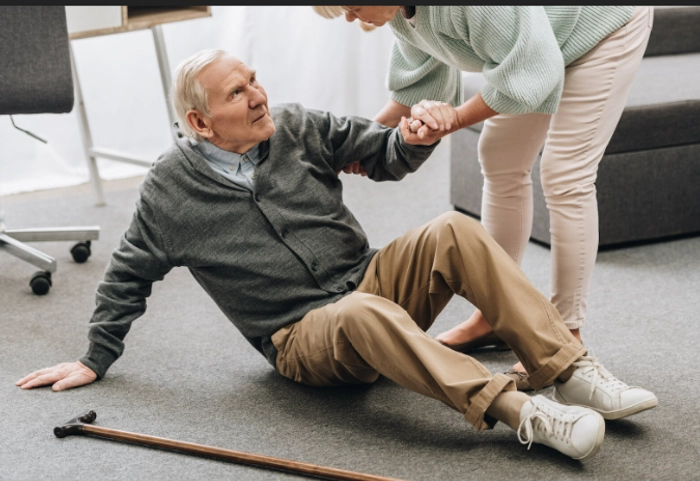Introduction
Falls are a common and serious concern among the elderly population, often leading to injuries, hospitalizations, and a decline in overall health and independence. At Dhyan Healthcare, we prioritize the safety and wellbeing of our elderly patients and aim to raise awareness about fall prevention strategies. In this blog, we'll explore practical tips and strategies to help prevent falls and promote safety and wellbeing among the elderly.
Understanding the Risk Factors
- Physical Factors: Age-related changes such as muscle weakness, balance problems, and vision impairments increase the risk of falls.
- Environmental Factors: Hazards in the home such as slippery floors, poor lighting, and cluttered walkways contribute to fall risk.
- Medical Conditions: Chronic health conditions, medications, and cognitive impairments can affect mobility and balance, increasing the risk of falls.
- Lifestyle Factors: Lack of physical activity, poor nutrition, and dehydration can weaken muscles and bones, making falls more likely.
Fall Prevention Strategies
-
Exercise Regularly: Engage in exercises that improve strength, balance, and flexibility, such as tai chi, yoga, or walking. Consult with a healthcare professional before starting any new exercise program.
-
Review Medications: Have a healthcare provider review your medications regularly to identify any side effects or interactions that may increase fall risk. Be aware of medications that may cause dizziness or drowsiness.
-
Get Your Vision Checked: Have your vision checked annually and wear glasses or contact lenses as prescribed. Poor vision can increase the risk of falls, especially in dimly lit environments.
-
Make Home Modifications: Remove tripping hazards such as loose rugs, clutter, and electrical cords. Install handrails and grab bars in bathrooms and stairways, and improve lighting in hallways, staircases, and outdoor pathways.
-
Use Assistive Devices: If necessary, use assistive devices such as canes, walkers, or wheelchairs to support mobility and stability. Ensure these devices are properly fitted and maintained.
-
Stay Hydrated and Eat Well: Drink plenty of water throughout the day to prevent dehydration, which can contribute to weakness and dizziness. Maintain a balanced diet rich in calcium and vitamin D to support bone health.
-
Stay Active and Engaged: Participate in social activities, hobbies, and volunteer work to stay mentally and physically active. Social engagement can improve mood and reduce the risk of falls.
-
Get Regular Check-Ups: Schedule regular check-ups with your healthcare provider to monitor your overall health and address any medical conditions that may increase fall risk.
Conclusion
Preventing falls in the elderly requires a multifaceted approach that addresses physical, environmental, and lifestyle factors. By implementing these fall prevention strategies and staying proactive about safety, elderly individuals can reduce their risk of falls and maintain their independence and quality of life. At Dhyan Healthcare, we're committed to promoting safety and wellbeing among the elderly population and providing comprehensive care and support.


